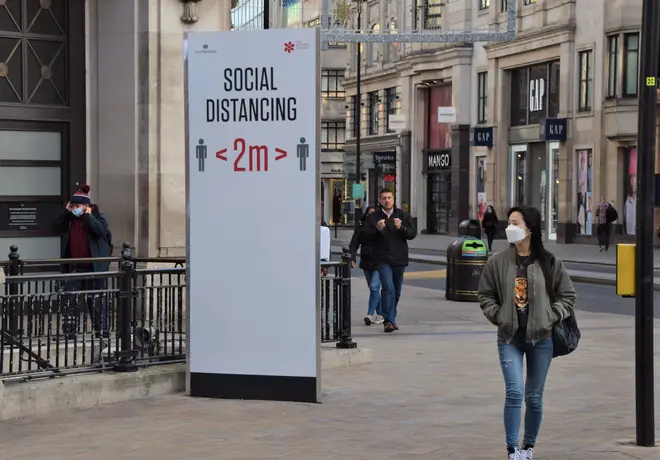
Clive Bull 1am - 4am
13 November 2020, 20:21

Lockdown measures currently in place in England are likely to take the coronavirus R number below one but returning to the previous tiered system will cause infections to rise back to levels seen early in November, Government scientists have said.
In a set of new documents released by the Scientific Advisory Group for Emergencies (Sage) on Friday, the experts said that if the four-week lockdown measures are well adhered to, the number of hospital admissions and deaths can be expected to fall until at least the second week of December.
But they added a longer-term outlook will depend on both the nature of non-pharmaceutical interventions implemented after December 2, when the lockdown measures are expected to be lifted, and policies over the festive period.
A document, dated November 4, said: "If England returns to the same application of the tiering system in place before November 5, then transmission will return to the same rate of increase as today."
On October 12, Prime Minister Boris Johnson announced England would be placed into "medium", "high" and "very high" alert levels - or Tier 1, 2 and 3 - involving varying restrictions aimed at tackling the virus.
But as the number of coronavirus infections continued to rise, a four-week lockdown was introduced on November 5.
The number of new daily cases across the UK is currently thought to be between 55,000 and 81,000.

Three members of the same family die with COVID-19 in five days
Experts believe R - which represents the number of people a Covid-19 positive person goes on to infect - is below one in some places, particularly in the north west of England.
Meanwhile, another Sage document suggests the national outbreak is still at a "high and controlled" phase.
If this remains the case, or if the outbreak returns to current levels after the lockdown, Sage has advised there is "little to no scope for loosening of social distancing rules over Christmas".
But if prevalence is "low and controlled" and R is "well below one" for some time, the experts say there may be a "greater potential for loosening of social distancing rules for a limited period of time during the festive period".
The Government scientists said if R is reduced to 1.1 or lower for some time, there may be a "limited accumulation of population immunity".
This, they say, will start reducing the average population susceptibility to the virus and slow down transmission.

Chris Hopson: Hospital waiting times 'not an ideal situation'
Sage said: "When R is 1.1, only 9% of the remaining susceptible (ie, not previously infected) population need to be infected for R to fall to one, solely as a result of the natural dynamics of the epidemic.
"At this point, in some sense, population immunity has caused the epidemic to plateau."
However, they added that population immunity is "very different from a classic 'herd immunity' scenario, where an epidemic has run through a population with limited impact of control measures".
The experts said in a population immunity scenario, there "will be very limited room to relax interventions, since the absolute level of population immunity reached will likely still be low".